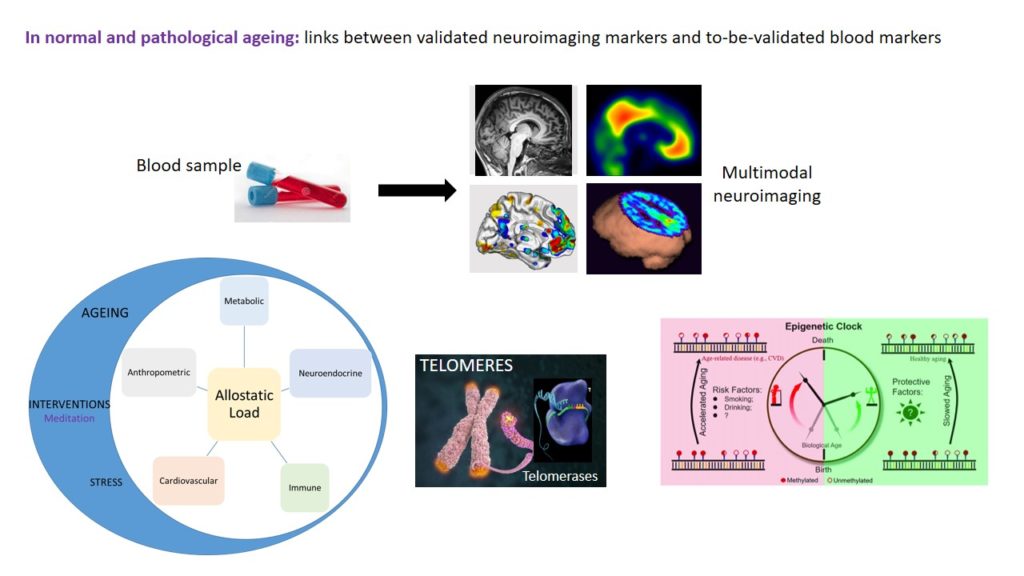Blood biomarkers
There is an increasing emphasis on developing blood biomarkers :
- For diagnosis and prediction of demantia
- To identify underlying pathophysiological mechanisms
- To serve as intermediate outcome measures to monitor response to interventions.
The Age-Well study offers a unique set of complementary assessments including blood markers (general health, emotions, stress, ageing and Alzheimer’s disease) but also detailed cognitive, sleep, and neuroimaging measures before and after an 18-month period of intervention and 26 months after the end of the intervention in 137 individuals (>65 years old). This rich database gives us the opportunity to study the meaning and relevance of blood biomarkers (compared to the other well-defined biomarkers such as neuroimaging), but also to obtain specific composite measures that appear as particularly promising. This is the case for the allostatic load, a biological composite score that aims to capture the overall physiological wear-and-tear of the body triggered by the repeated activation of compensatory physiological mechanisms as a response to physical, psychological, psychosocial life-long stress. We will be in an advantageous position to investigate the potential of this measure for diagnosis, prognosis and disease pathophysiology and treatment assessment.


List of blood biomarkers collected in the Age-Well population at baseline, after the 18-month period of intervention and 26 months after the end of the intervention. Some of these biomarkers are important for the brain as part of the body, but not specific to the brain itself (examples of such blood biomarkers : glycemia, cholesterol, inflammation related factors such as interleukins and C-reactive protein (CRP)). In addition to the general biomarkers, there are more specific to the brain like tau protein, amyloid beta and neurofilament light for example.

In our studies, we focus on these blood biomarkers and expect to find some interesting associations with neuroimaging markers, neuropsychological or sleep measures to further the understanding of underlying physiological mechanisms of normal and pathological ageing.